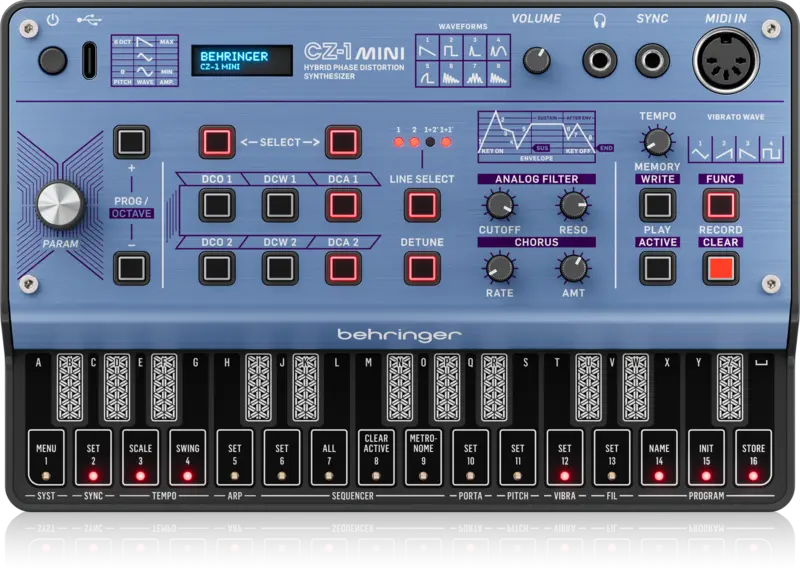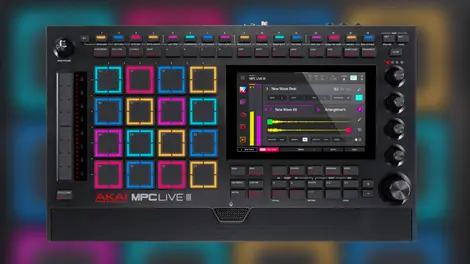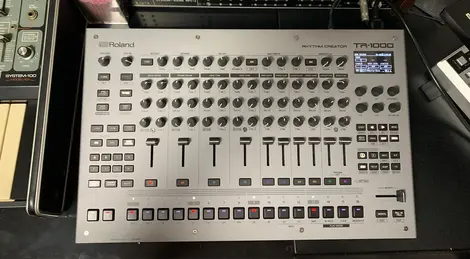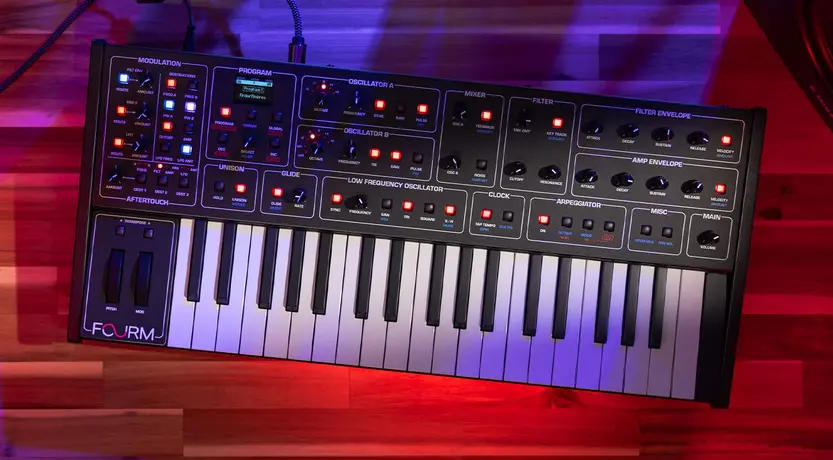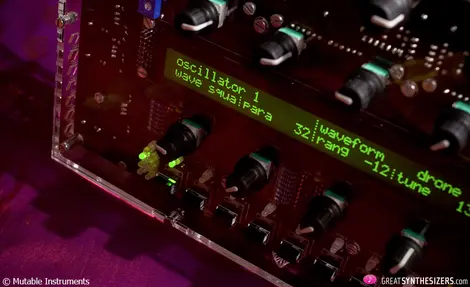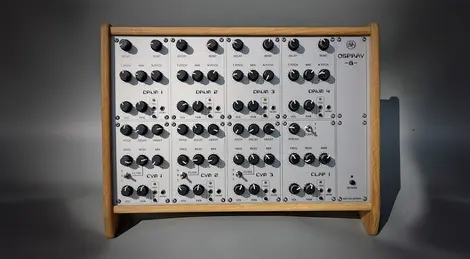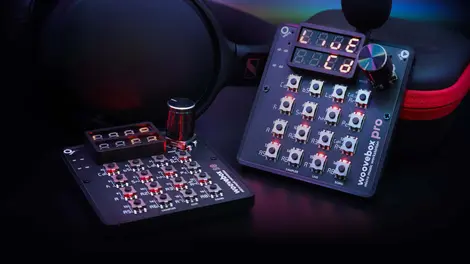CRUM DRUM Review: Compact Generative Drum Machine That Sparks Creativity
Generative Rhythms in a Compact Package
This 4-voice drum synthesizer combines randomization with hands-on control, making it perfect for sparking new ideas and creating evolving rhythms. While it has some limitations, its creative approach to drum programming offers something unique in the crowded drum machine market.
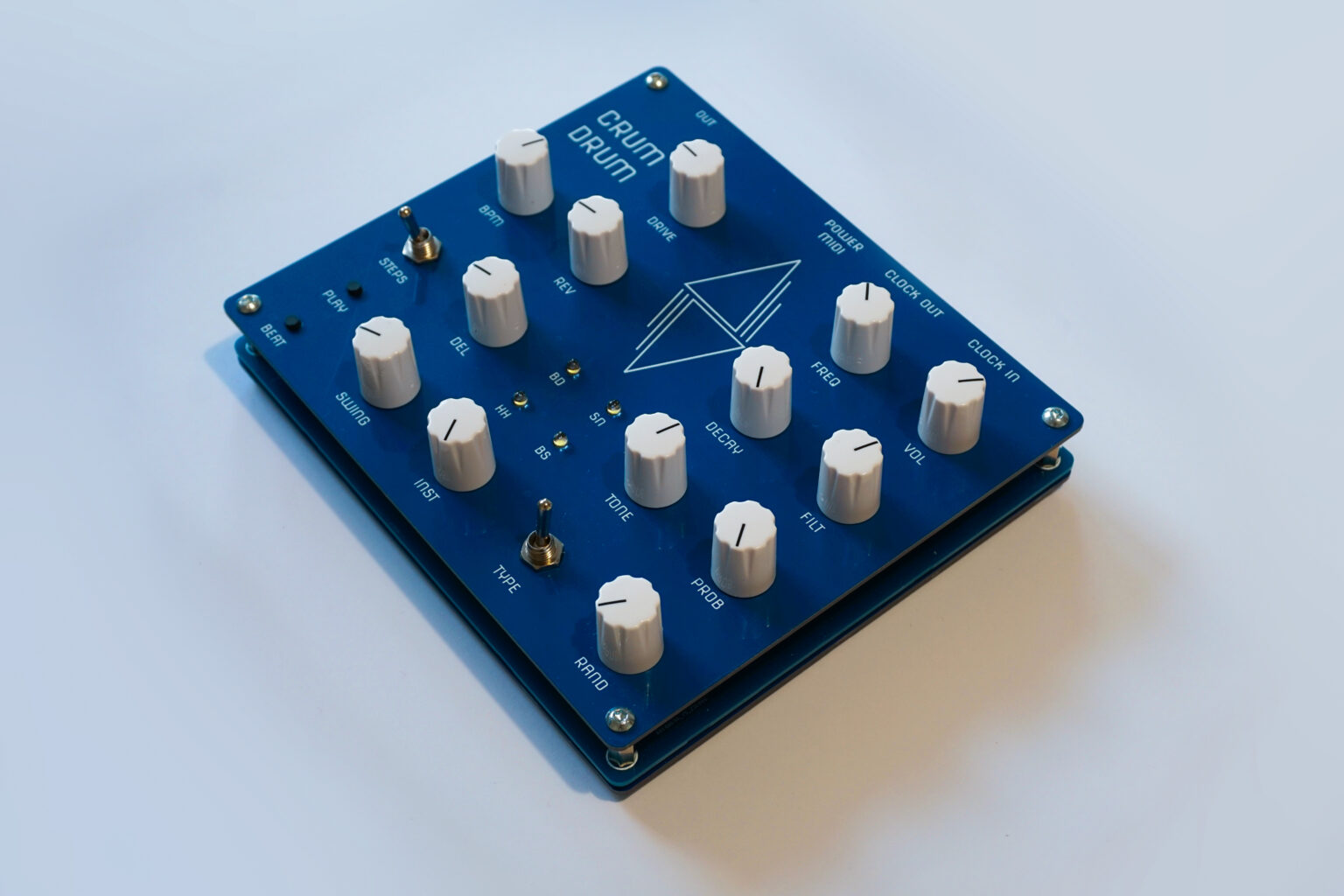
What Makes CRUM DRUM Special
The CRUM DRUM is a 4-voice drum machine featuring Kick, Snare, Hihat, and Bass instruments, each with 8 sound parameters and built-in randomization and probability-based sequencing. Unlike traditional drum machines that rely on step programming, the CRUM DRUM takes a generative approach where pressing the BEAT button generates new sequences for the current step of the selected instrument.
The four voices offer surprising variety. The kick provides punchy low-end, the snare delivers both tonal and noise elements, the hihat creates crisp percussion, and the bass uses FM synthesis for melodic elements. Each instrument has three different types you can switch between, effectively giving you 12 different drum sounds to work with.
Sound Shaping and Effects
Each voice comes with comprehensive sound shaping options. The FREQ knob controls the main frequency, while DECAY sets how long each hit lasts. The TONE parameter works differently for each instrument - adding pitch envelope to kicks, mixing tonal and noise elements for snares and hihats, and controlling FM amount for the bass.
The TYPE switch gives you three variations of each drum sound, while PROB (probability) and RAND (randomness) create the generative magic. Probability sets the chance that the instrument will play per step, while randomness increases parameter modulation for each voice.
Global effects include overdrive, reverb, delay, and swing. The delay is tempo-synced and subdivided differently depending on the tempo, though the effect controls are quite basic compared to dedicated effects units.
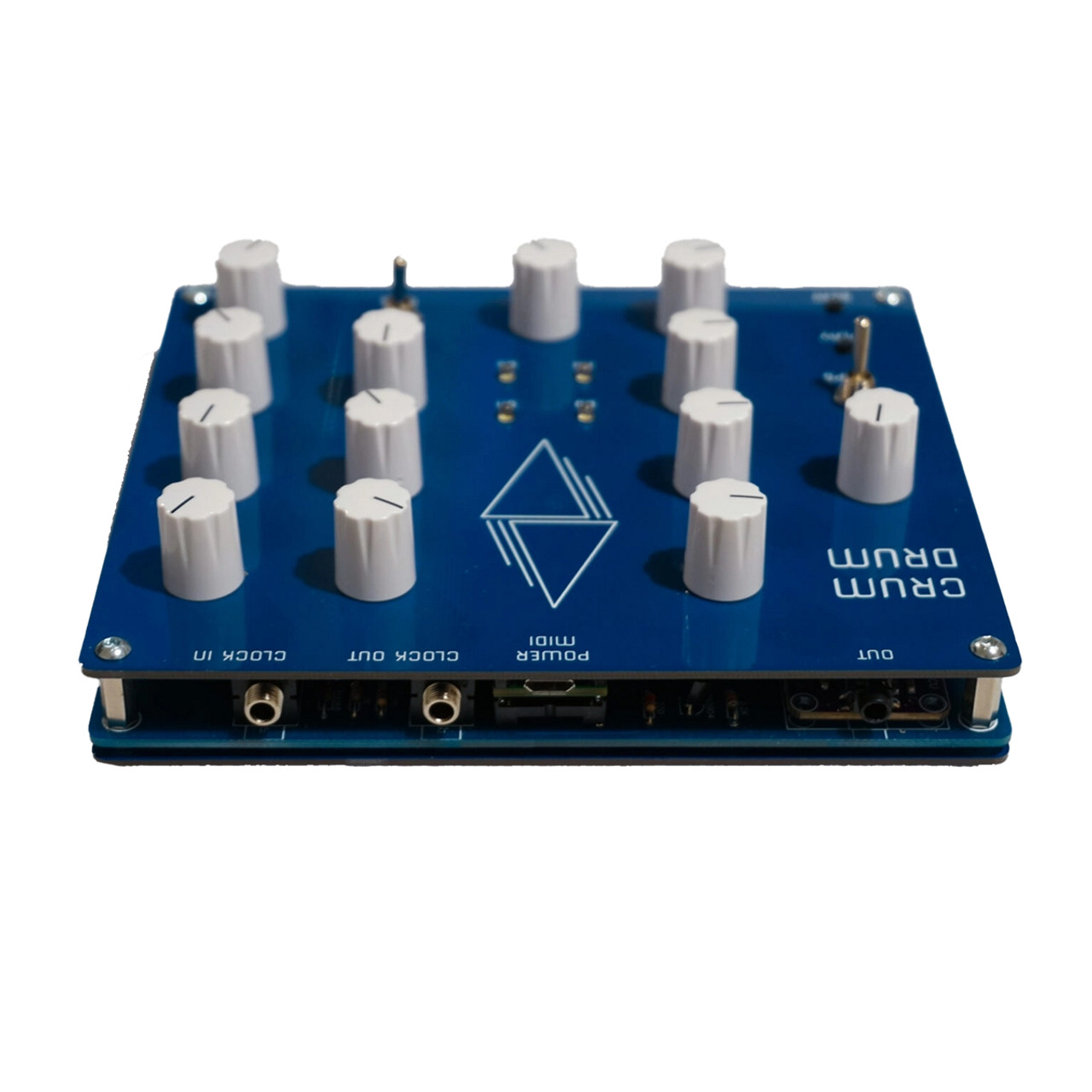
Connectivity and Sync Options
The CRUM DRUM offers solid connectivity for its size. It can send and receive both analog and MIDI clock, with the BPM knob acting as a clock division control when synced externally. MIDI sequencing is available on channel 1, with each instrument mapped to specific notes.
The recent firmware update added a useful CV input feature. The CLOCK IN can be configured as a CV input with three modes to control Frequency, Decay, or Tone on selected instruments. While it's only one CV input, this adds modular synth compatibility for those wanting to integrate it into larger setups.
Build Quality and Design Concerns
The CRUM DRUM follows a minimalist PCB-based design similar to the Korg NTS-1. It's available as both a DIY kit and assembled unit, with the DIY version requiring only through-hole component soldering since SMD parts come pre-installed.
However, this approach has drawbacks. Like the NTS-1, surface-mount jacks create durability concerns, with users reporting broken connectors from regular use. The lightweight construction makes it portable but less suitable for rough handling or frequent transport.
The unit is powered via micro-USB only, which means no battery operation out of the box. You could potentially use a power bank for mobile use, but this adds bulk to an otherwise compact device.
Performance and Use Cases
Home Studio and Jams: The CRUM DRUM excels in home studio environments where you want to quickly generate rhythm ideas. Its generative capabilities make it excellent as an idea machine or sample source.
Live Performance: For live use, the CRUM DRUM works well in controlled environments. You can connect its clock sync out to trigger external sequencers or play other instruments manually over its evolving rhythms.
Electronic Music Production: The generative features shine in electronic music where evolving, organic-sounding rhythms are desired. The randomized aspects create musical dynamics and variations that inspire new compositions.
Sound Design: Beyond drums, the CRUM DRUM can serve as a sound source for sampling or as an effects processor for other instruments, thanks to its built-in effects and unique character.
Limitations to Consider
MIDI Control: While the CRUM DRUM receives MIDI for sequencing, you cannot control sound parameters via MIDI. This limits integration with DAWs and hardware controllers for parameter automation.
Effects Depth: The onboard effects, while useful, offer limited control compared to dedicated processors. They're good for adding character but won't replace proper effects units.
Build Durability: The PCB-and-knobs construction, while keeping costs down, creates concerns about long-term reliability, especially for the input/output jacks.
Worth Considering
The CRUM DRUM succeeds as a creative tool that approaches rhythm programming from a fresh angle. Its generative features genuinely inspire new ideas, and the sound quality is impressive for its compact size. The innovative sequencing and solid connectivity options make it appealing for various musical contexts.
However, it's not a replacement for traditional drum machines. The build quality concerns and limited MIDI implementation make it better suited for studio experimentation than heavy live use. For producers, electronic musicians, and anyone curious about generative music-making, the CRUM DRUM offers a unique and inspiring approach to rhythm creation.
Pros:
- Compact and portable design
- Innovative generative sequencing
- Good sound variety with 4 instruments
- Clock sync in/out with division options
- CV input for modular integration
Cons:
- Fragile build quality
- Limited effects control
- No MIDI parameter control
- USB power only (no batteries)
- Fixed sequence lengths (16, 32, or 28 steps only)
